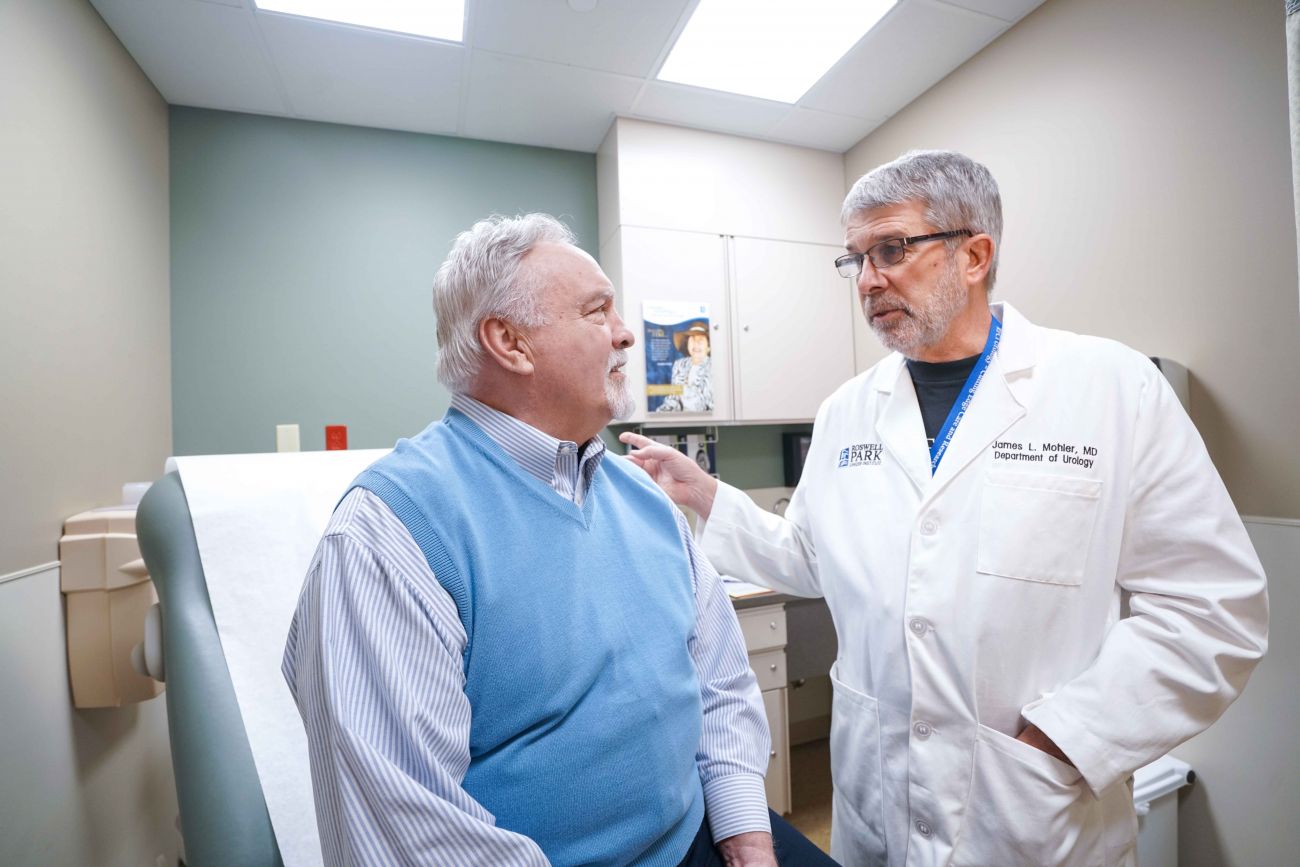If a man is fortunate enough to live to 100 years old, he'll most likely pass the century mark living with prostate cancer.
There's even a strong possibility that most of these centenarian men have been living with prostate cancer nearly half of the lives. As many as 50% of men over age 50 have prostate cancer. But, the majority of prostate cancers are found to be an unaggressive form of the disease. Because of prostate cancer's slow-growing nature, and the typically older age at diagnosis, Roswell Park Comprehensive Cancer Center, suggests a "watchful waiting" approach to most prostate cancers, a treatment plan that’s known as "active surveillance."
"Prostate cancers come in two types,” says James Mohler, MD, Chair of the National Comprehensive Cancer Network's Prostate Cancer Panel and Professor of Oncology at Roswell Park Comprehensive Cancer Center. “One type can grow and spread to other parts of the body and eventually kill you if left untreated, and a second type that we call 'clinically insignificant.'"
"Active surveillance would be used when you've been diagnosed with what's considered low risk or 'clinically insignificant' prostate cancer that could be categorized by the NCCN as very low risk, low risk, or intermediate favorable. In other words, it's an unaggressive prostate cancer that men develop as they age. You’re more likely to die with the disease, than of it, so it might be appropriate to monitor it instead of undergoing treatment. Statistically, 50% of men over the age of 50 are living with prostate cancer, and approximately half of all prostate cancer diagnoses are considered low grade and likely do not require invasive treatment."
Who Should Consider Active Surveillance?
About 45% of all prostate cancer diagnoses are candidates for active surveillance. This option is available for all men with prostate cancer who meet the following criteria:
- Diagnosed with very low risk, low risk, or intermediate favorable prostate cancer
- Have a PSA level under 10
- Had a normal prostate exam, or have only a single cancerous nodule on part of the prostate glade.
- Have no family history of aggressive cancer
- No biopsy graded as aggressive prostate cancer
In addition, your life expectancy is a factor in determining treatment recommendations. "If you're found to have a very low risk prostate cancer and you have a life expectancy of less than 20 years, or a low risk prostate cancer with less than a 10 years life expectancy, active surveillance should be the only treatment recommendation because treatment of those cancers would most likely be unnecessary," says Dr. Mohler.
Never miss another Cancer Talk blog!
Sign up to receive our monthly Cancer Talk e-newsletter.
Sign up!Active Surveillance Options
Depending on your diagnosis, your doctor may recommend one of two types of active surveillance.
Standard Active Surveillance
Standard active surveillance is for men whose prostate cancer is believed to pose no threat to their life, and it's unlikely to ever progress to where treatment is required. It might be sufficient to have a prostate exam and PSA tests performed as frequently as once a year.
Careful Active Surveillance
Careful active surveillance may be recommended if there is a higher suspicion that treatment might be necessary. "In these cases, in addition to PSA testing every six months, we recommend a baseline MRI of the prostate gland, so it can be compared to studies that will be done typically two and five years later,” Dr. Mohler explains. “Depending on the results of the PSAs and interpretation of MRIs, it might be necessary to have biopsies performed every two to five years to absolutely make sure that there's no evidence that the cancer is growing and requires treatment."
Why it's Okay to Wait
When you find out you have prostate cancer, your first thought might be to remove the prostate immediately with a prostatectomy. However, removing a prostate is not without risk. "It is a significant operation, with risk of losing your urinary control, and a high risk of losing your erectile function, and of course you'll have time away from work and suffer the discomfort of a major operation," says Dr. Mohler. "No one needs their prostate removed right away. Prostate cancer grows slowly, so it's perfectly fine if you appear to have a low-grade cancer to monitor the situation for a period of up to two years. There is very little evidence, if any, that a delay between diagnosis and treatment impacts cure rates.
"Many men don't realize that by the time we can diagnose a prostate cancer with an abnormal prostate exam or PSA, the cancer has probably been present in the body for more than 20 years. So, there is very little danger to letting cancer go another one or two years while you're deciding whether or not you’re lucky enough to avoid treatment."




